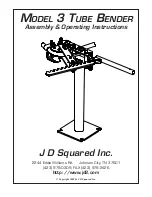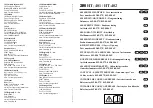
•
All data objects or their data attributes can be selected for a data set.
•
Only those data attributes of a data object can/will be selected which have the same function
constraint (FC).
•
Data objects with different FC can be selected for a data set. For example, DOs with FC = ST
and DOs with FC=MX can be member in one data set.
•
A single data attribute can be selected when it is specified with a trigger option. For example,
the data attribute stVal of the data object Pos can be selected as a member of a data set,
because it is specified with the trigger option data change detected (dchg).
The description of the data sets with name and the list of data object members (FCDAs is included in
the SCL file in the IED section in the Logical device subsection. As specified in IEC 61850–7–2
clause 9, the data sets are part of a logical node. They are most likely included in the LLN0.
6.2
Report control block (URCB/BRCB)
SEMOD129786-17 v6
To be able to transmit the signals configured in a DataSet, a report control block must be configured
to handle and specify how the events are transmitted to the clients. There are two types of report
control blocks; unbuffered and buffered. The buffered report control block stores the events during a
communication interrupt, while the unbuffered is sent upon data change and not stored during
interruption.
The content of a BRCB is listed in IEC 61850-7-2 in clause 14. The BRCB contains many attributes
which are of interest to handle and secure the communication between the client and the server and
may be set once as default in a project. Others are of application interest in the way events are
handled in a project.
•
Buffer time (valid only for BRCB)
•
This parameter describes how long the report should wait for other expected events
before it sends the report to the client. When it is known, that additional events are
generated as a follow up, it is useful to wait, for example, 500 ms for additional events
stored in the report. This feature reduces the number of telegrams transmitted in case of a
burst of changes. Parameter
IEC61850BufTimEnable
enables/disables the buffer time.
For more information, refer section
IEC 61850-8-1 communication protocol
in Technical
manual.
•
Trigger options
•
The data attributes know three different trigger options (dchg, qchg, dupd). Within the
BRCB, the two other can be defined (integrity and general interrogation). The attribute
Trigger option is a multiple choice and allows to mask the supported trigger options in this
BRCB.
•
Integrity period
•
When integrity is selected in the trigger option attribute, it is needed to define an integrity
period to force the transmission of all data listed in the DataSet. This is done by the
attribute Integrity period. This feature can be used as a background cycle to ensure that
the process image in all partners is the same.
•
General interrogation
•
A general interrogation is only done on request from a client. Not all Data-sets may
contain information which is needed for a general update of the client. For example data
with T(ransient) = TRUE are not part of a GI. When the BRCB attribute general
interrogation is set to TRUE a GI request from the client will be handled. The report
handler will transmit all data defined in the Data-set with their actual values. The IEC
61850 standard defines that all buffered events shall be transmitted first before the GI is
started. A running GI shall be stopped and a new GI shall be started, when a new GI
request is received while a GI is running.
•
Purge buffer (valid only for BRCB)
Section 6
1MRK 511 441-UEN Rev. C
Data sets and control blocks
26
Switchgear control unit SAM600-IO
Communication protocol manual
© 2017 - 2021 Hitachi Power Grids. All rights reserved
















































